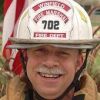According to the National Institute of Standards and Technology, wind speeds as low as 10 mph will cause extreme fire conditions on the interior of a structure fire, regardless if the structure is a high-rise building or a one- or two-story family dwelling.
What is a wind-driven structure fire you ask?
It is a rapidly developing fire that results from prevailing winds entering a fire-vented location of a structure. This pressurizes the interior, creating a deadly flow path of blowtorch-effect flames and untenable temperatures when a secondary opening (vent point) is created.
Capt. William Mora, who retired from the San Antonio (Texas) Fire Department and authored the landmark study Firefighter Disorientation, estimates that between 2002 and 2010 approximately 24 firefighters were killed in structure fires where wind was a factor.
Historic wind-driven fires
Two major fires that drew national attention were affected by the prevailing wind: the massive lightweight wood frame apartment building fire in Houston that which trapped a construction worker on a fifth-floor balcony, soon followed tragically by the Beacon Street fire in Boston, which killed two firefighters.
According to a 2009 NIOSH fire investigation report two Houston firefighters were killed six minutes after making initial entry through the A side door of this 4,200-square-foot residential dwelling. Before entry, fire was observed coming from the C side.
Shortly after entering, crews reported hearing a loud roar and being rapidly engulfed in a large volume of fire that swept through the structure from the C side and vented from the A side door.
Managing a wind-driven structure fire
Here are seven steps to help you better manage the wind-driven structure fire threat:
- Understand that wind-driven structure fires pose a special hazard; failure to do so results in a lack of situational awareness and an inability to calculate and manage risk.
- Obtain a daily weather report with expected wind conditions, and communicate this to your crews.
- Conduct a 360-degree size-up. Consider the effects of wind. Determine if the structure is being pressurized from a fire-vented location or will become pressurized if window/door/roof failure occurs. Winds that pressurize a structure fire can supercharge the fire and create “monster fire” conditions.
- When a wind-driven condition is encountered, the situation must immediately be transmitted to all companies.
- Vent points must be controlled and coordinated.
- Advancing through a downwind opening from the unburned side will create a wind trap which will place firefighters and victims in a dangerous flow path.
- Consider a transitional fire attack from the pressurized (windward) side to knock down the main body of fire. If structurally sound, enter from the pressurized side to conduct search and rescue and final fire control operations.
It is absolutely imperative that firefighters and officers alike understand the changing dynamics of wind and ventilation at today’s structure fire. Failure to do so places victims and firefighters at much greater risk.












